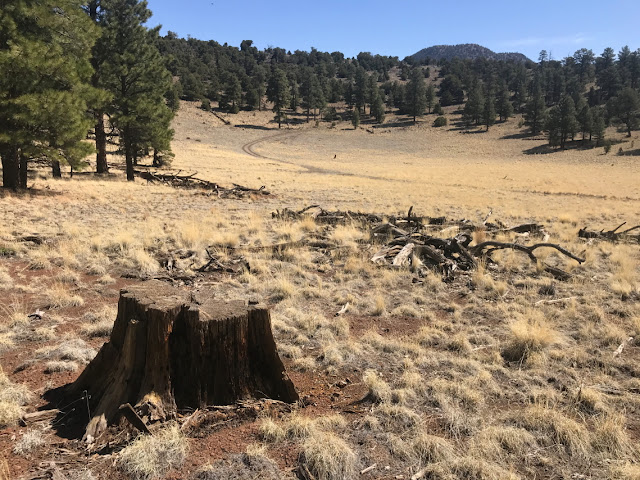Winter photo of SP Crater, the 4th youngest cone and crater in the San Francisco Volcanic Field. It has recently been re-re-dated at about 60,000 to 70,000 years old. (Photo January 1, 2011)
You might think this blog title refers to a plea for mental health during the global pandemic. But while the heading is pandemic related, it actually involves a more in-depth exploration of various volcanic craters and cones located around my home nestled within the San Francisco Volcanic field. With all of my river trips and international excursions postponed or outright cancelled, we are positioning in place under wide-open skies of northern Arizona. And the Coconino National Forest is currently still open for exploration off trail. A group of friends and I are exploring!
Sunset Crater (Crater 41) is the youngest volcano in the San Francisco Volcanic Field and a recent redetermination of its eruptive date is constrained between 1085 and 1090 CE. You can read the paper that describes this new date here. The original date of 1064 BCE can be found in this reference.
Crater 36 - April 25, 2020
Dr. Harold S. Colton, the founder of the Museum of Northern Arizona catalogued most of the more than 600 volcanic cones and craters within the field. He gave number to many cones that had no otherl names. Crater 36 is a rather indistinct cone in a field of many cones. But it provided a beautiful hike nonetheless on a clear, April day.
The approach to the crater has views of rather mature ponderosa pines. The north flank of the San Francisco Mountain composite cone can be seen in the distance.
This is a panoramic view to the northwest from the top of Crater 36. From left to right you can see the San Francisco Mountain composite cone and dozens of rather young scoria cones. US Highway 89 is the linear gap in the trees.
The coarse cookware pot remains from the occupation of the Sinagua cultural group, which inhabited the area between 700 and 1200 CE. To understand how these people may have been affected by the Sunset Crater eruption of 1985 CE, see this paper.
A view from the west rim of Crater 36 toward the east and to O'Leary Peak, a dacite dome volcano (Crater 23 of Colton) with a K-Ar age of between 240,000-221,000 years.
Panoramic view of the interior crater.
There was early logging inside this crater and the stumps remain in this dry climate. In fact, modern-day ecologists can easily map the tree density in this forest from the time before logging began in the 1880s. This mature ponderosa was cut using a two-man cross-cut saw, as can bee seen by the bi-level cut on top of the stump. The limb debris from this felled tree lies in the background. The tree was cut likely about 120 years ago.
Medicine Valley in the middle distance. This was a wonderful hike! Next up - Moon Crater.









Very cool, Wayne. You never know what is right in your back yard!
ReplyDeleteMoon Crater: Wider than a mile! I'm hiking you in style someday.
ReplyDelete